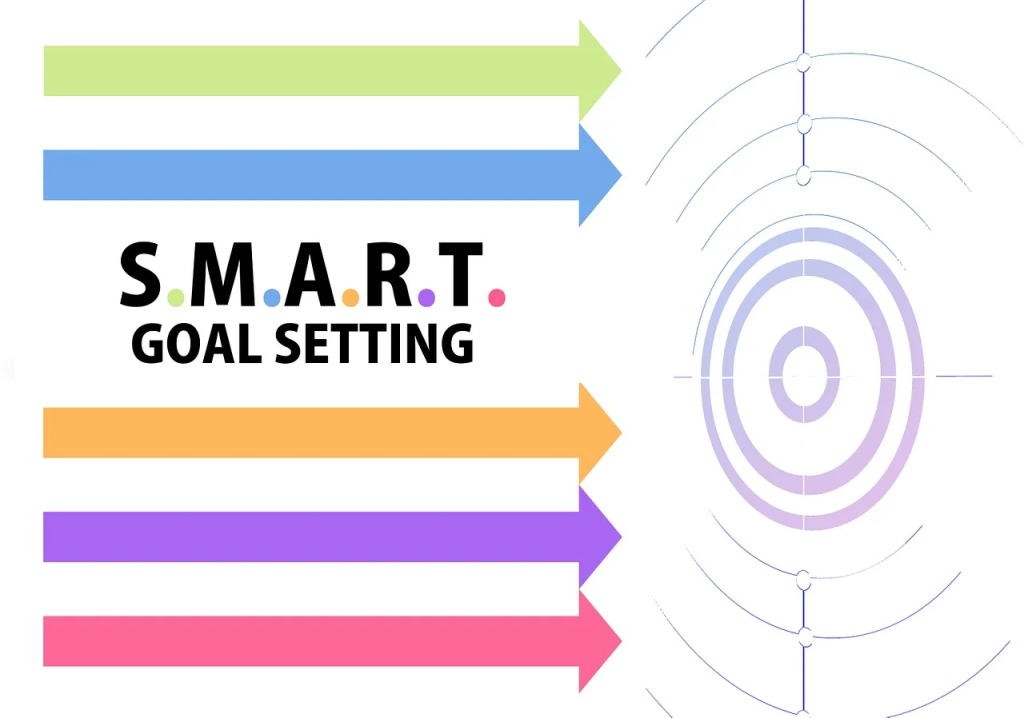We all have big dreams, but turning them into reality can feel overwhelming. Maybe you’ve set goals before but didn’t follow through, or perhaps you just don’t know where to start. Don’t worry—you’re not alone. The key to success lies in setting clear, actionable goals and following proven strategies.
In this blog post, I’ll introduce you to three top goal-setting strategies that will help you stay focused and motivated: SMART Goals, OKR (Objectives and Key Results), and PACT (Purpose, Action, and Context). These strategies have been tested by successful individuals and backed by research, and I’ll show you how you can use them to make 2025 your best year yet. You’ll also get access to downloadable templates, a special tool recommendation, and expert insights from leaders in the field of goal setting. Let’s get started!

1. SMART Goals: Setting Clear, Measurable Goals with Deadlines
The SMART goal-setting framework is one of the most effective and widely used strategies for achieving personal and professional success. Here’s how it works:
Specific: Your goal should be clear and unambiguous.
Measurable: You should be able to track your progress.
Attainable: Make sure your goal is realistic and achievable.
Relevant: Align the goal with your bigger picture or vision.
Time-bound: Set a deadline to create urgency and accountability.
Why It Works
Research from the American Journal of Lifestyle Medicine found that people who set specific and measurable goals are more likely to succeed than those with vague aspirations. As Brian Tracy, a renowned personal development expert, says: “A goal without a plan is just a wish.” SMART Goals turn your wishes into concrete plans with clear timelines.
How to Use SMART Goals
Let’s walk through an example. Suppose your goal is to get fit. Rather than saying “I want to get fit,” a SMART version might look like this:
Specific: I want to lose 15 pounds and run a 5K.
Measurable: I will track my weight loss and running progress using a fitness app.
Attainable: I will lose 1-2 pounds per week and run three times a week.
Relevant: Achieving this will improve my overall health and energy.
Time-bound: I will reach this goal by May 2025.
Break down your goal further into smaller action steps, like signing up for a race or scheduling workouts. To track progress, use tools like MyFitnessPal for food tracking or Nike Run Club for running goals.
Download Your SMART Goals Template
You can download a SMART Goals Template here. Fill it out for your personal or professional goals and start seeing results today.

2. OKR (Objectives and Key Results): Focus on Outcomes and Measure Success
OKRs are a powerful goal-setting framework used by top companies like Google, LinkedIn, and Intel. Unlike SMART goals, which are more about setting specific, measurable targets, OKRs focus on the outcomes and key results you want to achieve. Here’s how it works:
Objective: Define your overarching goal—what do you want to achieve?
Key Results: Set measurable milestones that will help you achieve that objective.
Why It Works
OKRs are highly effective for ambitious, long-term goals. They emphasize both the vision (the “why”) and the action steps (the “how”). James Clear, author of Atomic Habits, explains: “If you do not know where you are going, you will likely end up somewhere else.” OKRs help you focus on the right things, track your progress, and make adjustments as needed.
How to Use OKRs
Let’s take a career-related goal as an example:
Objective: I want to advance in my career by becoming a team leader.
Key Results:
1. Complete two leadership training courses by March 2025.
2. Lead at least three team projects in the next six months.
3. Gain a promotion by July 2025.
With this approach, you’ll have a clear objective, but also measurable key results to track along the way. Use apps like Trello or Asana to break down each key result into tasks and assign deadlines.
Download Your OKR Template
Grab your OKR Template here. Use it to map out your objectives and key results to ensure you stay focused and on track.
When your why is big enough, the how becomes easy. Tony Robbins
3. PACT: Creating a Purpose-Driven Goal with Context and Action
The PACT system is a simple yet powerful goal-setting framework designed to help you stay connected to the “why” behind your goals. It stands for:
Purpose: Understand your deeper reasons for pursuing the goal.
Action: Break the goal down into concrete, actionable steps.
Context: Understand the environment, resources, and constraints that may affect your goal.
Track: Monitor your progress and adjust as needed.
Why It Works
PACT emphasizes clarity and purpose. Goals aren’t just tasks to check off; they’re steps toward something meaningful. Research shows that goals tied to a deeper purpose are more motivating and sustainable.
As Tony Robbins famously says, “When your why is big enough, the how becomes easy.” The PACT system helps you connect your actions to your values, making your goals more fulfilling.
How to Use PACT
Let’s walk through an example:
Purpose: I want to start a blog to share my experiences as a working mom and help others.
Action:
1. Set up a WordPress blog.
2. Write one blog post every week.
3. Share each post on social media to grow an audience.
Context: I’ll dedicate one hour every evening to writing and scheduling posts. I’ll also use a blogging course to improve my skills.
Track: I’ll monitor my blog’s traffic and engagement every month and adjust my content strategy accordingly.
Download Your PACT Goal-Setting Template
Download your PACT Template here and use it to connect your actions with your purpose.


0 Comments